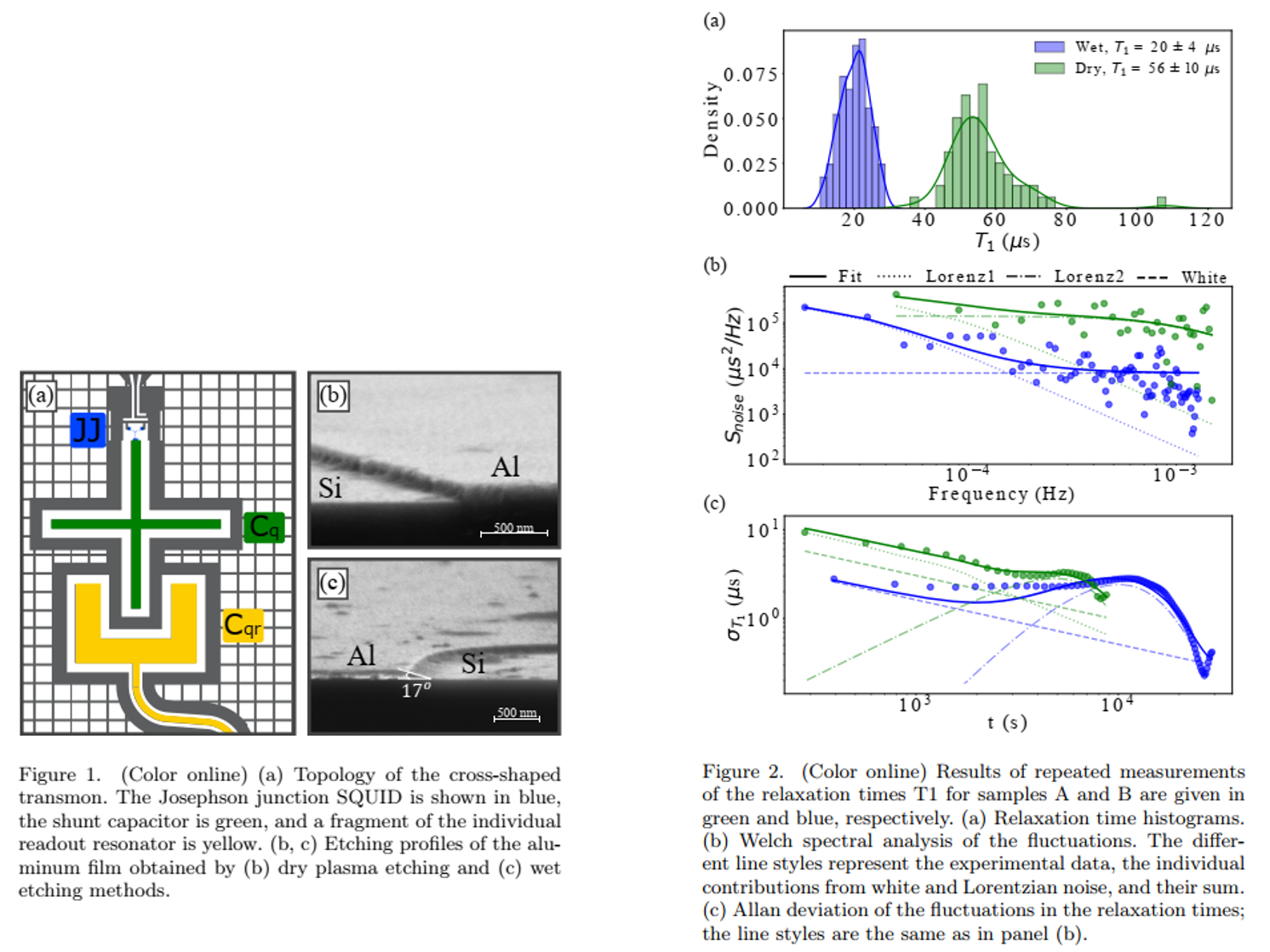Effect of Etching Methods on Dielectric Losses in Transmons
2024-09-25 16:26
2825 浏览
Source: https://arxiv.org/abs/2409.16097
Abstract: Superconducting qubits are considered as a promising platform for implementing a fault tolerant quantum computing. However, surface defects of superconductors and the substrate leading to qubit state decoherence and fluctuations in qubit parameters constitute a significant problem. The amount and type of defects depend both on the chip materials and fabrication procedure. In this work, transmons produced by two different methods of aluminum etching: wet etching in a solution of weak acids and dry etching using a chlorine-based plasma are experimentally studied. The relaxation and coherence times for dry-etched qubits are more than twice as long as those for wet-etched ones. Additionally, the analysis of time fluctuations of qubit frequencies and relaxation times, which is an effective method to identify the dominant dielectric loss mechanisms, indicates a significantly lower impact of two-level systems in the dry-etched qubits compared to the wet-etched ones.

Conclusion: In this work, the relaxation and coherence times, as
well as the fluctuations of these parameters and transmon
frequencies, have been measured for two groups of transmons fabricated by dry plasma etching and wet etching.
The samples are designed the same and are studied in
an identical experimental setup. The only difference between the two groups of transmons is the etching method.
We have found that the coherence and relaxation times
for qubits fabricated using dry etching are significantly
longer than those for qubits fabricated using wet etching. A possible reason for such difference is the more
pronounced imperfections of the wet etched surfaces (in
particular, the sharp edges of the superconductor electrodes and the irregularities in the aluminum film), which
lead to a concentration of an electric field and a stronger
coupling to TLSs.
Analysis of the noise spectral characteristics and Allan
deviation reveals the difference in the mechanisms of dielectric losses in dry and wet etched qubits. Studying the
dry-etched qubits, we have observed jumps in the qubit
frequency and the internal quality factor of the resonator,
indicating the dominant influence of individual fluctuators. In contrast, the frequency of wet-etched qubits drifts
and a significant contribution from 1/f noise is observed
in their spectra, suggesting the system being influenced
by an ensemble of fluctuators. The sharp edges formed by
wet etching not only lead to a local increase in the electric field strength but also result in a more significant
dependence of the field strength on the distance. Consequently, TLSs located within a smaller region contribute
most. We presume that the density of defects during wet
etching is higher and, consequently, such surface cleaning
process is less efficient compared to dry etching.
To summarize, the analysis of the time fluctuations
of coherence times and qubit frequencies allows one to
identify the dominant mechanisms of dielectric losses.
